
More info
If you're doing head work on your new LT1 or LT4 power house, you'll want to replace the factory pushrods with these upgraded Chromoly pushrods from Comp Cams.
Prior to extensive research at COMP Cams, it was thought that the pushrod only had to be strong enough not to fail, bend or burn up at the ends. But engineers have learned that the frequency of the pushrod must match that of all the rest of the parts in the valve train, as well as the rpm at which the engine will be run. As cam profiles get more aggressive and valve spring pressures increase, the importance of selecting the right pushrods has never been more critical. COMP Cams carries a wide selection of precision pushrods to handle any application from stock replacement to hardcore race.
Prior to extensive research at COMP Cams, it was thought that the pushrod only had to be strong enough not to fail, bend or burn up at the ends. But engineers have learned that the frequency of the pushrod must match that of all the rest of the parts in the valve train, as well as the rpm at which the engine will be run. Today's all-out race engines demand the highest quality components at every step, and COMP Cam Hi-Tech Pushrods fill that requirement.
The one-piece design from .080" wall seamless chromoly tubing ensures the ultimate in strength and durability. The ends are precision formed, yielding added thickness in the critical tip area for strength while maintaining constant wall thickness and concentricity. The pushrods are then heat-treated to ensure compatibility with guide plates and for maximum strength. They are OD-ground for consistency and black oxide-finished with their length and part number laser etched on the OD for ease of identification.
The Magnum 5/16" and 3/8" Pushrods offer an affordable solution for your .080" wall chromemoly pushrod needs. Designed to withstand the stresses of a high performance engine, these pushrods are heat-treated for extended durability and may be ordered as single pieces or in sets of 8 and 16. Multiple end types are available to fit virtually any application. All Magnum Pushrods are black-oxide finished and come with laser-etched part number and length for easy identification.
|
|||
|
Wall Thickness:.080"
Diameter:5/16"
Length:7.850"
PUSHROD TECH:
A large number of variables are involved in determining the correct length pushrod for your application. Pushrod length is affected by any of the following:
- Block deck height
- Head deck height
- Head stud boss height
- Rocker arm brand/design
- Cam base circle size
- Lifter design/brand/pushrod seat height
- Valve stem length
Don't assume anything when determining the right pushrod for your new engine. A pushrod that fits one engine may not necessarily work in another. Any number of items can be different on your engine, requiring you to use a different pushrod length. Following the steps below will streamline the pushrod selection process, ensuring that you get the right parts the first time.
1. Buy a checking pushrod.
Invest in a checking pushrod. They are on page 295 of this master catalog. They are available in two different designs, with the more expensive of the two being easier to measure once you have it adjusted to the proper length for your valve train. Neither is particularly expensive if you consider time lost and freight costs when returning pushrods.
Other companies offer their own versions of pushrod length checking devices, plastic pieces with complicated instructions to calculate the length. The main disadvantage with these is that you have to order the pushrods and receive them before you know if your calculations are correct. With a checking pushrod, you can actually rotate the motor over and check the rocker arm/valve tip relationship as you adjust the pushrod length. When you get the correct geometry, it is a simple matter then to measure the length and place an order. COMP Cams carries a large number of various length and diameter pushrods.
2. Determine correct valve train geometry.
What is the correct length pushrod for your application? The one that produces correct valve train geometry. What is correct valve train geometry? When the rocker arm roller tip rolls from the intake side of the valve tip, across the center of the tip (at approximately mid-lift), to the exhaust side of the valve tip (at full lift) and back. See Diagram A.
3. Measure the resulting pushrod.
Measuring the length of a pushrod is a simple process. The most important thing to remember is that different manufacturers measure pushrods differently. Not all pushrods of a stated length will measure exactly the same. The three most common pushrod measurements are shown in Diagram B on the following page.
Theoretical Length: This assumes that the pushrod has no oil hole in the end of it. Therefore, the radius at either end is complete, which lengthens the pushrod approximately .017" in the case of a 5/16" pushrod with .100" diameter oil holes, minimally chamfered.
Actual Length: This is what you would measure if you had a set of calipers large enough to measure over the oil holes at each end of the pushrod. This is the measurement that most people can relate to. Unfortunately, this measurement is affected not only by the diameter of the oil holes but also by the entrance chamfer for each oil hole.
Gauge Length: Although the most difficult to measure (it requires a special length checking gauge), this measurement is the most reliable. This is because the oil holes and their chamfers are eliminated from the measurement. The only problem is that not all companies use the same gauge diameter. COMP Cams uses a .140" gauge diameter. All Magnum and Hi-Tech䋢 Pushrods listed in this catalog are measured using this technique. See Diagram B on the following page.
4. Simple measurement techniques.
We realize that most people don't have access to the special gauge required for these measurements or even a dial caliper large enough for most pushrods. We've developed two techniques to help you determine exact pushrod length so that the perfect valve train geometry is achieved in your engine.

![Comp Cams: Hardened Pushrods [C7 Corvette Camaro CTS V, LT1 LT4]](http://weaponxmotorsports.com/cdn/shop/products/Comp_Cams_Hi_Tech_grande.jpg?v=1571441526)
![Comp Cams: Hardened Pushrods [C7 Corvette Camaro CTS V, LT1 LT4]](http://weaponxmotorsports.com/cdn/shop/products/Comp_Cams_Hi_Tech_compact.jpg?v=1571441526)
![Comp Cams: Hardened Pushrods [C7 Corvette Camaro CTS V, LT1 LT4]](http://weaponxmotorsports.com/cdn/shop/products/diaAPushrod_2a1106e8-a4d2-4d0d-ba5e-249bb278f335_compact.jpg?v=1571441526)
![DSX: Flex Fuel Sensor Kit [Camaro Corvette CTS V G8 GTO SS]](http://weaponxmotorsports.com/cdn/shop/products/Camaro5_SS_grande.jpg?v=1571441062)
![DSX: Flex Fuel Sensor Kit [Camaro Corvette CTS V G8 GTO SS]](http://weaponxmotorsports.com/cdn/shop/products/ZL1-5_small.jpg?v=1571441062)
![DSX: Flex Fuel Sensor Kit [Camaro Corvette CTS V G8 GTO SS]](http://weaponxmotorsports.com/cdn/shop/products/Camaro6_SS_small.jpg?v=1571441062)
![DSX: Flex Fuel Sensor Kit [Camaro Corvette CTS V G8 GTO SS]](http://weaponxmotorsports.com/cdn/shop/products/ZL1-6_small.jpg?v=1571441062)
![DSX: Flex Fuel Sensor Kit [Camaro Corvette CTS V G8 GTO SS]](http://weaponxmotorsports.com/cdn/shop/products/C6_small.jpg?v=1571441062)
![DSX: Flex Fuel Sensor Kit [Camaro Corvette CTS V G8 GTO SS]](http://weaponxmotorsports.com/cdn/shop/products/C6_ZR1_small.jpg?v=1571441062)
![DSX: Flex Fuel Sensor Kit [Camaro Corvette CTS V G8 GTO SS]](http://weaponxmotorsports.com/cdn/shop/products/CTS_V2_small.jpg?v=1571441062)
![DSX: Flex Fuel Sensor Kit [Camaro Corvette CTS V G8 GTO SS]](http://weaponxmotorsports.com/cdn/shop/products/ZL1-6_a778d310-d92a-4496-8100-700e3d362f93_small.jpg?v=1571441062)
![DSX: Flex Fuel Sensor Kit [Camaro Corvette CTS V G8 GTO SS]](http://weaponxmotorsports.com/cdn/shop/products/G8_small.jpg?v=1571441062)
![DSX: Flex Fuel Sensor Kit [Camaro Corvette CTS V G8 GTO SS]](http://weaponxmotorsports.com/cdn/shop/products/GTO_small.jpg?v=1571441062)
![DSX: Flex Fuel Sensor Kit [Camaro Corvette CTS V G8 GTO SS]](http://weaponxmotorsports.com/cdn/shop/products/SS_small.jpg?v=1571441062)
![DSX: Flex Fuel Sensor Kit [Camaro Corvette CTS V G8 GTO SS]](http://weaponxmotorsports.com/cdn/shop/products/C6_589a1134-043c-4f44-8505-6e2dee988743_small.jpg?v=1571441062)
![DSX: Flex Fuel Sensor Kit [Camaro Corvette CTS V G8 GTO SS]](http://weaponxmotorsports.com/cdn/shop/products/C7_LT1_small.jpg?v=1571441062)
![DSX: Flex Fuel Sensor Kit [Camaro Corvette CTS V G8 GTO SS]](http://weaponxmotorsports.com/cdn/shop/products/C7_Z06_small.jpg?v=1571441062)
![WEAPON-X: Thermostat Gen 5 Engine [Corvette Camaro CTS V, LT1 LT4 LT5]](http://weaponxmotorsports.com/cdn/shop/products/L310166914_900_grande.jpg?v=1571441471)
![PS: Magnetic Oil Pan Drain Plug [Camaro Corvette CTS V SS G8 GTO]](http://weaponxmotorsports.com/cdn/shop/products/3_2caeb276-c03b-470f-8143-543ce54a3b01_grande.jpg?v=1571441058)
![Nick Williams: 103mm Throttle Body for LS / LTx [Corvette, Camaro, CTS V, LS, LT1, LT4, LT5]](http://weaponxmotorsports.com/cdn/shop/products/img_7367_26018872348_o_grande.jpg?v=1571441592)
![Nick Williams: 103mm Throttle Body for LS / LTx [Corvette, Camaro, CTS V, LS, LT1, LT4, LT5]](http://weaponxmotorsports.com/cdn/shop/products/img_7369_25020533847_o_small.jpg?v=1571441592)
![Nick Williams: 103mm Throttle Body for LS / LTx [Corvette, Camaro, CTS V, LS, LT1, LT4, LT5]](http://weaponxmotorsports.com/cdn/shop/products/img_7370_26018871268_o_small.jpg?v=1571441592)
![Nick Williams: 103mm Throttle Body for LS / LTx [Corvette, Camaro, CTS V, LS, LT1, LT4, LT5]](http://weaponxmotorsports.com/cdn/shop/products/img_7372_25020532697_o_small.jpg?v=1571441592)
![Nick Williams: 103mm Throttle Body for LS / LTx [Corvette, Camaro, CTS V, LS, LT1, LT4, LT5]](http://weaponxmotorsports.com/cdn/shop/products/img_7376_26018869998_o_small.jpg?v=1571441592)
![Nick Williams: 103mm Throttle Body for LS / LTx [Corvette, Camaro, CTS V, LS, LT1, LT4, LT5]](http://weaponxmotorsports.com/cdn/shop/products/img_7386_26018869448_o_small.jpg?v=1571441592)
![Nick Williams: 103mm Throttle Body for LS / LTx [Corvette, Camaro, CTS V, LS, LT1, LT4, LT5]](http://weaponxmotorsports.com/cdn/shop/products/img_7387_39181766934_o_small.jpg?v=1571441592)
![Nick Williams: 103mm Throttle Body for LS / LTx [Corvette, Camaro, CTS V, LS, LT1, LT4, LT5]](http://weaponxmotorsports.com/cdn/shop/products/img_7388_38992731705_o_small.jpg?v=1571441592)
![Nick Williams: 103mm Throttle Body for LS / LTx [Corvette, Camaro, CTS V, LS, LT1, LT4, LT5]](http://weaponxmotorsports.com/cdn/shop/products/img_7389_26018867468_o_small.jpg?v=1571441592)
![Nick Williams: 103mm Throttle Body for LS / LTx [Corvette, Camaro, CTS V, LS, LT1, LT4, LT5]](http://weaponxmotorsports.com/cdn/shop/products/img_7393_26018866928_o_small.jpg?v=1571441592)
![WEAPON-X: LT1 LT4 87mm Ported Throttle Body [Camaro Corvette CTS V]](http://weaponxmotorsports.com/cdn/shop/products/IMG_4067_8bf789fe-8092-492d-929d-4da784a8ddeb_grande.jpg?v=1571441527)
![WEAPON-X: LT1 LT4 87mm Ported Throttle Body [Camaro Corvette CTS V]](http://weaponxmotorsports.com/cdn/shop/products/IMG_4069_5ab9f2bb-ea8e-4bb5-9d43-ce1556f8b2fc_small.jpg?v=1571441527)
![WEAPON-X: LT1 LT4 87mm Ported Throttle Body [Camaro Corvette CTS V]](http://weaponxmotorsports.com/cdn/shop/products/IMG_4056_efb97539-2463-4d27-940f-3bbbb82003c5_small.jpg?v=1571441527)
![WEAPON-X: LT1 LT4 87mm Ported Throttle Body [Camaro Corvette CTS V]](http://weaponxmotorsports.com/cdn/shop/products/IMG_4060_8758bc2b-f2b1-464e-af76-e6c0dd14dc5e_small.jpg?v=1571441527)
![WEAPON-X: LT1 LT4 87mm Ported Throttle Body [Camaro Corvette CTS V]](http://weaponxmotorsports.com/cdn/shop/products/IMG_4063_51da5433-e45c-41c2-82e7-4d2b92d7ab45_small.jpg?v=1571441527)
![WEAPON-X: LT1 LT4 87mm Ported Throttle Body [Camaro Corvette CTS V]](http://weaponxmotorsports.com/cdn/shop/products/72ED60FA-1473-4DE4-9EB1-6656B10A24B3_zpsqg96fkek_small.jpg?v=1571441527)
![SMC: Catch Cans [LS LT]](http://weaponxmotorsports.com/cdn/shop/products/reverse_ls1_7cb89a03-1928-4f29-9339-22832f73e315_grande.jpg?v=1571441054)
![Elite Engineering: E2-X Catch Can Kit [Camaro Corvette CTS V, LS LT]](http://weaponxmotorsports.com/cdn/shop/products/CCan-1__32401.1466021945.1280.1280_grande.jpg?v=1571441590)
![Elite Engineering: E2-X Catch Can Kit [Camaro Corvette CTS V, LS LT]](http://weaponxmotorsports.com/cdn/shop/products/clamp1__27269.1466021895.1280.1280_small.jpg?v=1571441590)
![Elite Engineering: E2-X Catch Can Kit [Camaro Corvette CTS V, LS LT]](http://weaponxmotorsports.com/cdn/shop/products/CSS__53537.1466021959.1280.1280_small.jpg?v=1571441590)
![Elite Engineering: E2-X Catch Can Kit [Camaro Corvette CTS V, LS LT]](http://weaponxmotorsports.com/cdn/shop/products/CV__52447.1466021954.1280.1280_small.jpg?v=1571441590)
![Elite Engineering: E2-X Catch Can Kit [Camaro Corvette CTS V, LS LT]](http://weaponxmotorsports.com/cdn/shop/products/E2X_Catch_Can_-_Dual_Port_-_Flow_Direction__45647.1466021845.1280.1280_small.jpg?v=1571441590)
![Elite Engineering: E2-X Catch Can Kit [Camaro Corvette CTS V, LS LT]](http://weaponxmotorsports.com/cdn/shop/products/E2X_Catch_Can_Dual_Port_copy__79142.1440788575.1280.1280__27980.1466007177.1280.1280_small.jpg?v=1571441590)
![Elite Engineering: E2-X Catch Can Kit [Camaro Corvette CTS V, LS LT]](http://weaponxmotorsports.com/cdn/shop/products/e2x-1__07509.1466021891.1280.1280_small.jpg?v=1571441590)
![Elite Engineering: E2-X Catch Can Kit [Camaro Corvette CTS V, LS LT]](http://weaponxmotorsports.com/cdn/shop/products/e2x-kit-2__55582.1466021899.1280.1280_small.jpg?v=1571441590)
![Elite Engineering: E2-X Catch Can Kit [Camaro Corvette CTS V, LS LT]](http://weaponxmotorsports.com/cdn/shop/products/Ultra_Catch_Can_-_etching__90589.1466021867.1280.1280_small.jpg?v=1571441590)
![GM: LT4 Injectors [Camaro Corvette CTS V, LT1 LT4 LT5]](http://weaponxmotorsports.com/cdn/shop/products/lt1-lt4-driect-injection-engine-08_913e16e5-9eba-490e-823c-35210c3b6b43_grande.jpg?v=1571441528)
![GM: LT4 Injectors [Camaro Corvette CTS V, LT1 LT4 LT5]](http://weaponxmotorsports.com/cdn/shop/products/IMG_8857_1_a6cb2bb5-66d8-480b-b9e9-e2451602a63b_small.jpg?v=1571441528)
![WEAPON-X: 112mm Throttle Body Adapter [LS LT1 LT4]](http://weaponxmotorsports.com/cdn/shop/products/image_b97bf8f9-aa0d-4e29-b70c-75aa38199a79_grande.jpg?v=1571441896)
![WEAPON-X: 112mm Throttle Body Adapter [LS LT1 LT4]](http://weaponxmotorsports.com/cdn/shop/products/image_769c292c-1378-47aa-bd84-d19b4906ac89_small.jpg?v=1571441896)
![WEAPON-X: 112mm Throttle Body Adapter [LS LT1 LT4]](http://weaponxmotorsports.com/cdn/shop/products/image_f6698a85-114e-4bb6-9d58-b501375fc993_small.jpg?v=1571441896)
![WEAPON-X: 112mm Throttle Body Adapter [LS LT1 LT4]](http://weaponxmotorsports.com/cdn/shop/products/image_06828d4e-cc00-44ff-8f39-0ca65765899c_small.jpg?v=1571441896)
![WEAPON-X: 112mm Throttle Body Adapter [LS LT1 LT4]](http://weaponxmotorsports.com/cdn/shop/products/image_b789ceec-2a56-4ee9-8e49-85d626d7234e_small.jpg?v=1571441896)
![WEAPON-X: 112mm Throttle Body Adapter [LS LT1 LT4]](http://weaponxmotorsports.com/cdn/shop/products/image_033842d1-063f-49e8-b9a6-76f622111c68_small.jpg?v=1571441896)
![WEAPON-X: 112mm Throttle Body Adapter [LS LT1 LT4]](http://weaponxmotorsports.com/cdn/shop/products/image_f69e074e-1605-4bd9-9d09-3ff15792bbba_small.jpg?v=1571441896)
![GM: LT4 High Pressure Fuel Pump [Camaro Corvette CTS V, LT1 LT4 LT5]](http://weaponxmotorsports.com/cdn/shop/products/f120705149_3d1f8083-25be-4d94-8702-7721d2175841_grande.png?v=1571441528)
![GM: LT4 High Pressure Fuel Pump [Camaro Corvette CTS V, LT1 LT4 LT5]](http://weaponxmotorsports.com/cdn/shop/products/F120705160_8e4a16a3-741e-430a-a44a-4594171a5e92_small.png?v=1571441528)
![GM: LT4 High Pressure Fuel Pump [Camaro Corvette CTS V, LT1 LT4 LT5]](http://weaponxmotorsports.com/cdn/shop/products/F146157938_f7ddfb27-0fcb-4655-9f82-8a4f75a04c74_small.jpg?v=1571441528)
![ICT: LT5 to LT4/LT1 95mm Throttle Body Adapter Plate [Camaro, Corvette, CTSV3, LT1 LT4]](http://weaponxmotorsports.com/cdn/shop/products/551793_7ca323a9-99e9-4421-a50a-dc52aadf9f9f_grande.jpg?v=1571441793)
![ICT: LT5 to LT4/LT1 95mm Throttle Body Adapter Plate [Camaro, Corvette, CTSV3, LT1 LT4]](http://weaponxmotorsports.com/cdn/shop/products/551793_2_d59ab432-3257-4f7c-a13c-5b48479a24b7_small.jpg?v=1571441793)
![ICT: LT5 to LT4/LT1 95mm Throttle Body Adapter Plate [Camaro, Corvette, CTSV3, LT1 LT4]](http://weaponxmotorsports.com/cdn/shop/products/551793_3_small.jpg?v=1571441793)
![ICT: LT5 to LT4/LT1 95mm Throttle Body Adapter Plate [Camaro, Corvette, CTSV3, LT1 LT4]](http://weaponxmotorsports.com/cdn/shop/products/551793_4_a705c96c-8e11-4efd-9b3d-e188418961aa_small.jpg?v=1571441793)
![ICT: LT5 to LT4/LT1 95mm Throttle Body Adapter Plate [Camaro, Corvette, CTSV3, LT1 LT4]](http://weaponxmotorsports.com/cdn/shop/products/551793_5_small.jpg?v=1571441793)
![ICT: LT5 to LT4/LT1 95mm Throttle Body Adapter Plate [Camaro, Corvette, CTSV3, LT1 LT4]](http://weaponxmotorsports.com/cdn/shop/products/551793_6_5b4b0208-99f3-4dab-94f9-b46e95ceabdc_small.jpg?v=1571441793)
![ICT: LT5 to LT4/LT1 95mm Throttle Body Adapter Plate [Camaro, Corvette, CTSV3, LT1 LT4]](http://weaponxmotorsports.com/cdn/shop/products/551793_7_small.jpg?v=1571441793)
![ICT: LT5 to LT4/LT1 95mm Throttle Body Adapter Plate [Camaro, Corvette, CTSV3, LT1 LT4]](http://weaponxmotorsports.com/cdn/shop/products/551793_8_small.jpg?v=1571441793)
![WEAPON-X: LT Billet Valve Covers [Camaro Corvette CTS V, LT1 LT4 LT5]](http://weaponxmotorsports.com/cdn/shop/products/40407628_1848688228541739_380289469678354432_o_a97621f5-bf00-448c-8e3a-9c075fafd1f8_grande.jpg?v=1678210914)
![WEAPON-X: LT Billet Valve Covers [Camaro Corvette CTS V, LT1 LT4 LT5]](http://weaponxmotorsports.com/cdn/shop/products/1LE6885_26e02ffa-1d24-41aa-8147-595dfc6d7067_small.jpg?v=1678210914)
![WEAPON-X: LT Billet Valve Covers [Camaro Corvette CTS V, LT1 LT4 LT5]](http://weaponxmotorsports.com/cdn/shop/products/1LE7618_b8adbd43-ea4a-45a5-83bf-eb7d740b0f25_small.jpg?v=1678210914)
![WEAPON-X: LT Billet Valve Covers [Camaro Corvette CTS V, LT1 LT4 LT5]](http://weaponxmotorsports.com/cdn/shop/products/Collage_Sale_copy_0ffd68eb-5172-4214-9830-193987ed89e6_small.jpg?v=1678210914)
![WEAPON-X: LT Billet Valve Covers [Camaro Corvette CTS V, LT1 LT4 LT5]](http://weaponxmotorsports.com/cdn/shop/products/WEAPON-X_LT_Valve_Covers_red_abde0ab7-ed81-41c6-ab41-77bea5c6b58d_small.jpg?v=1678210914)
![WEAPON-X: LT Billet Valve Covers [Camaro Corvette CTS V, LT1 LT4 LT5]](http://weaponxmotorsports.com/cdn/shop/products/WEAPON-X_LT_Valve_Covers_549c81b4-d22c-4c07-9e7a-d17c567a2e81_small.jpg?v=1678210914)
![WEAPON-X: LT Billet Valve Covers [Camaro Corvette CTS V, LT1 LT4 LT5]](http://weaponxmotorsports.com/cdn/shop/products/35754130162_64e3292d41_b_c34bf753-6e95-4d67-9743-3e04e9ea5f0b_small.jpg?v=1678210914)
![WEAPON-X: LT Billet Valve Covers [Camaro Corvette CTS V, LT1 LT4 LT5]](http://weaponxmotorsports.com/cdn/shop/products/IMG_5464_small.jpg?v=1678210914)
![WEAPON-X: LT Billet Valve Covers [Camaro Corvette CTS V, LT1 LT4 LT5]](http://weaponxmotorsports.com/cdn/shop/products/35754125162_f8591a784d_o_c7fe8e48-0da3-4e01-b21c-93071de295dc_small.jpg?v=1571441588)
![WEAPON-X: LT Billet Valve Covers [Camaro Corvette CTS V, LT1 LT4 LT5]](http://weaponxmotorsports.com/cdn/shop/products/IMG_8726_bdde7381-ee0f-45a3-b0ea-54f95dac9ff3_small.jpg?v=1571441588)
![WEAPON-X: LT Billet Valve Covers [Camaro Corvette CTS V, LT1 LT4 LT5]](http://weaponxmotorsports.com/cdn/shop/products/IMG_9029-Edit_small.jpg?v=1571441588)
![WEAPON-X: LT Billet Valve Covers [Camaro Corvette CTS V, LT1 LT4 LT5]](http://weaponxmotorsports.com/cdn/shop/products/IMG_7786_small.jpg?v=1571441588)
![WEAPON-X: LT Billet Valve Covers [Camaro Corvette CTS V, LT1 LT4 LT5]](http://weaponxmotorsports.com/cdn/shop/products/IMG_5358_small.jpg?v=1571441588)
![WEAPON-X: LT Billet Valve Covers [Camaro Corvette CTS V, LT1 LT4 LT5]](http://weaponxmotorsports.com/cdn/shop/products/IMG_8974_7be54d70-a156-4727-8f86-e5bd00352b4f_small.jpg?v=1571441588)
![WEAPON-X: LT Billet Valve Covers [Camaro Corvette CTS V, LT1 LT4 LT5]](http://weaponxmotorsports.com/cdn/shop/products/40403716_1848688275208401_2358330790925828096_o_small.jpg?v=1571441588)
![WEAPON-X: LT Billet Valve Covers [Camaro Corvette CTS V, LT1 LT4 LT5]](http://weaponxmotorsports.com/cdn/shop/products/20170720_110803_bf64506a-00f5-4982-be7e-b54c615811c4_small.jpg?v=1571441588)
![WEAPON-X: LT Billet Valve Covers [Camaro Corvette CTS V, LT1 LT4 LT5]](http://weaponxmotorsports.com/cdn/shop/products/WEAPON7_small.jpg?v=1571441588)
![WEAPON-X: LT Billet Valve Covers [Camaro Corvette CTS V, LT1 LT4 LT5]](http://weaponxmotorsports.com/cdn/shop/products/Cam6_SS_X1100c_49253a50-4bbc-482b-9709-adcc8eb15af9_small.jpg?v=1571441588)
![WEAPON-X: LT Billet Valve Covers [Camaro Corvette CTS V, LT1 LT4 LT5]](http://weaponxmotorsports.com/cdn/shop/products/35694844_1737286796348550_257997955326279680_o_b659cafe-1417-493b-8f39-6cb8a49bcb4e_small.jpg?v=1571441588)
![WEAPON-X: LT Billet Valve Covers [Camaro Corvette CTS V, LT1 LT4 LT5]](http://weaponxmotorsports.com/cdn/shop/products/Cam6_ZL1_X1000_3f3d7918-a231-489e-b3c0-deaf5429a441_small.jpg?v=1571441588)
![WEAPON-X: LT Billet Valve Covers [Camaro Corvette CTS V, LT1 LT4 LT5]](http://weaponxmotorsports.com/cdn/shop/products/VC_14726376-01a5-4701-8553-d49459953d65_small.jpg?v=1571441588)
![WEAPON-X: LT Billet Valve Covers [Camaro Corvette CTS V, LT1 LT4 LT5]](http://weaponxmotorsports.com/cdn/shop/products/ZL1-6_X700_package_73e3145c-5473-46bd-838a-a94759c0d053_small.jpg?v=1571441588)
![WEAPON-X: LT Billet Valve Covers [Camaro Corvette CTS V, LT1 LT4 LT5]](http://weaponxmotorsports.com/cdn/shop/products/redvc_75c3dc6e-f9db-49eb-b36e-3cbd67cf369c_small.jpg?v=1571441588)
![WEAPON-X: LT Billet Valve Covers [Camaro Corvette CTS V, LT1 LT4 LT5]](http://weaponxmotorsports.com/cdn/shop/products/Cam6_SS_X1100b_74235b62-0a1b-4584-8e13-e6845aa31a01_small.jpg?v=1571441588)
![WEAPON-X: LT Billet Valve Covers [Camaro Corvette CTS V, LT1 LT4 LT5]](http://weaponxmotorsports.com/cdn/shop/products/29432622_1644877972256100_3167428657270489088_n_afc46efa-406f-414a-a790-60c58aab1b36_small.jpg?v=1571441588)
![WEAPON-X: LT Billet Valve Covers [Camaro Corvette CTS V, LT1 LT4 LT5]](http://weaponxmotorsports.com/cdn/shop/products/20170518_121356_22542f56-a199-4f29-ae0d-eb819ad1853f_small.jpg?v=1571441588)
![WEAPON-X: LT Billet Valve Covers [Camaro Corvette CTS V, LT1 LT4 LT5]](http://weaponxmotorsports.com/cdn/shop/products/20170518_121406_592e06a3-9c23-4d6c-a9cb-5a70ac5b3f12_small.jpg?v=1571441588)
![WEAPON-X: LT Billet Valve Covers [Camaro Corvette CTS V, LT1 LT4 LT5]](http://weaponxmotorsports.com/cdn/shop/products/35754133602_fef5367e5c_b_37242d06-eb87-4aa9-a51c-32de864d3a46_small.jpg?v=1571441588)
![WEAPON-X: LT Billet Valve Covers [Camaro Corvette CTS V, LT1 LT4 LT5]](http://weaponxmotorsports.com/cdn/shop/products/C7Z_X1200_229e991a-b967-416b-b493-b9432f8ba499_small.jpg?v=1571441588)
![WEAPON-X: LT Billet Valve Covers [Camaro Corvette CTS V, LT1 LT4 LT5]](http://weaponxmotorsports.com/cdn/shop/products/20170519_153319_f411e60e-c7ca-423b-bf28-e834442e3bd9_small.jpg?v=1571441588)
![WEAPON-X: LT Billet Valve Covers [Camaro Corvette CTS V, LT1 LT4 LT5]](http://weaponxmotorsports.com/cdn/shop/products/lt4_w_wxm_vc_1a5c5986-3431-4da4-b3e4-7196db9181c5_small.jpg?v=1571441588)
![WEAPON-X: LT Billet Valve Covers [Camaro Corvette CTS V, LT1 LT4 LT5]](http://weaponxmotorsports.com/cdn/shop/products/35970700036_ecbeb4bd75_k_aa763711-097b-47a8-808a-492f75cbfd91_small.jpg?v=1571441588)
![WEAPON-X: LT Billet Valve Covers [Camaro Corvette CTS V, LT1 LT4 LT5]](http://weaponxmotorsports.com/cdn/shop/products/1LE6888_0bccb701-a6dd-49ea-90f2-c490a0a96a64_small.jpg?v=1636559265)
![WEAPON-X: LT Billet Valve Covers [Camaro Corvette CTS V, LT1 LT4 LT5]](http://weaponxmotorsports.com/cdn/shop/products/1LE7612_99422fb6-6542-4012-8d4c-64b5fe744867_small.jpg?v=1636559264)
![WEAPON-X: LT4 Supercharger Conversion [C7 Corvette, Camaro gen 6]](http://weaponxmotorsports.com/cdn/shop/products/lt4kit1_grande.jpg?v=1571441529)
![WEAPON-X: LT4 Supercharger Conversion [C7 Corvette, Camaro gen 6]](http://weaponxmotorsports.com/cdn/shop/products/IMG_0833_1024x1024_576876ec-153c-41df-a1e7-bf88e3a95f3c_small.jpg?v=1569297747)
![WEAPON-X: LT4 Supercharger Conversion [C7 Corvette, Camaro gen 6]](http://weaponxmotorsports.com/cdn/shop/products/lt4_stingray_small.jpg?v=1571441529)
![WEAPON-X: LT4 Supercharger Conversion [C7 Corvette, Camaro gen 6]](http://weaponxmotorsports.com/cdn/shop/products/IMG_0832_1024x1024_2c2d267f-7a0f-4afd-92fe-d633f8238ea3_small.jpg?v=1569297747)
![WEAPON-X: LT4 Supercharger Conversion [C7 Corvette, Camaro gen 6]](http://weaponxmotorsports.com/cdn/shop/products/lt4_stingray2_small.jpg?v=1571441529)
![WEAPON-X: LT4 Supercharger Conversion [C7 Corvette, Camaro gen 6]](http://weaponxmotorsports.com/cdn/shop/products/IMG_0200_1024x1024_34c9c67b-ce7d-42b8-9734-9ebb2eb93d68_small.jpg?v=1569297747)
![WEAPON-X: LT4 Supercharger Conversion [C7 Corvette, Camaro gen 6]](http://weaponxmotorsports.com/cdn/shop/products/lt4kit2_small.jpg?v=1571441529)
![WEAPON-X: LT4 Supercharger Conversion [C7 Corvette, Camaro gen 6]](http://weaponxmotorsports.com/cdn/shop/products/lt4kit4_small.jpg?v=1571441529)
![WEAPON-X: LT4 Supercharger Conversion [C7 Corvette, Camaro gen 6]](http://weaponxmotorsports.com/cdn/shop/products/lt4kit3_small.jpg?v=1571441529)
![WEAPON-X: LT4 Supercharger Conversion [C7 Corvette, Camaro gen 6]](http://weaponxmotorsports.com/cdn/shop/products/lt4_stingray_3_dyno_small.jpg?v=1571441529)
![WEAPON-X: LT4 Supercharger Conversion [C7 Corvette, Camaro gen 6]](http://weaponxmotorsports.com/cdn/shop/products/IMG_0892a_1024x1024_a8886c05-c102-4a19-832a-52d0278ad088_small.jpg?v=1569297747)
![GM: LT5 Throttle Body with Adapter [Camaro Corvette CTS V, LT1 LT4 LT5]](http://weaponxmotorsports.com/cdn/shop/products/551793_ecbd0cd8-ce9f-4124-b44f-70f8f9445774_small.jpg?v=1571441793)
![GM: LT5 Throttle Body with Adapter [Camaro Corvette CTS V, LT1 LT4 LT5]](http://weaponxmotorsports.com/cdn/shop/products/551793_2_ef3e1ad5-004c-47ea-8c3f-32321c8eff83_small.jpg?v=1571441793)
![GM: LT5 Throttle Body with Adapter [Camaro Corvette CTS V, LT1 LT4 LT5]](http://weaponxmotorsports.com/cdn/shop/products/IMG_4067_a52719e5-2d64-4fea-bdc0-e3f7805e57e4_small.jpg?v=1571441793)
![GM: LT5 Throttle Body with Adapter [Camaro Corvette CTS V, LT1 LT4 LT5]](http://weaponxmotorsports.com/cdn/shop/products/IMG_4069_9aef63b3-62ae-47f4-9b85-169e4d802bea_small.jpg?v=1571441793)
![GM: LT5 Throttle Body with Adapter [Camaro Corvette CTS V, LT1 LT4 LT5]](http://weaponxmotorsports.com/cdn/shop/products/IMG_4056_2e27c552-4f02-4016-8308-296d86dfb7a2_small.jpg?v=1571441793)
![GM: LT5 Throttle Body with Adapter [Camaro Corvette CTS V, LT1 LT4 LT5]](http://weaponxmotorsports.com/cdn/shop/products/IMG_4060_efb25771-0689-43be-a8e9-cab18a0471e6_small.jpg?v=1571441793)
![GM: LT5 Throttle Body with Adapter [Camaro Corvette CTS V, LT1 LT4 LT5]](http://weaponxmotorsports.com/cdn/shop/products/IMG_4063_eb652aac-deef-4ed9-aee2-6f0f64b3a71a_small.jpg?v=1571441793)
![GM: LT5 Throttle Body with Adapter [Camaro Corvette CTS V, LT1 LT4 LT5]](http://weaponxmotorsports.com/cdn/shop/products/551793_4_620fb81a-3f6c-451c-bc8b-7d1f6759a236_small.jpg?v=1571441793)
![GM: LT5 Throttle Body with Adapter [Camaro Corvette CTS V, LT1 LT4 LT5]](http://weaponxmotorsports.com/cdn/shop/products/551793_6_b86727a9-daea-40f9-aee2-e22f8eecf9bf_small.jpg?v=1571441793)
![WEAPON-X: LT5 95mm Ported Throttle Body [Camaro Corvette CTS V]](http://weaponxmotorsports.com/cdn/shop/products/IMG_4067_264d07fd-e2c3-43ab-be12-f98d0c3dc2a5_small.jpg?v=1571441789)
![WEAPON-X: LT5 95mm Ported Throttle Body [Camaro Corvette CTS V]](http://weaponxmotorsports.com/cdn/shop/products/IMG_4069_e839931d-098a-4aee-b4e1-2f1aa3901e7d_small.jpg?v=1571441789)
![WEAPON-X: LT5 95mm Ported Throttle Body [Camaro Corvette CTS V]](http://weaponxmotorsports.com/cdn/shop/products/IMG_4056_c07b3482-b32f-44c9-a0a0-94135e394ada_small.jpg?v=1571441789)
![WEAPON-X: LT5 95mm Ported Throttle Body [Camaro Corvette CTS V]](http://weaponxmotorsports.com/cdn/shop/products/IMG_4060_3391b9d2-3b7e-4eff-8fa4-a7cfdacefb31_small.jpg?v=1571441789)
![WEAPON-X: LT5 95mm Ported Throttle Body [Camaro Corvette CTS V]](http://weaponxmotorsports.com/cdn/shop/products/IMG_4063_fa873870-18b2-4ccf-acea-a63a79033c74_small.jpg?v=1571441789)
![WEAPON-X: LT5 95mm Ported Throttle Body [Camaro Corvette CTS V]](http://weaponxmotorsports.com/cdn/shop/products/551793_small.jpg?v=1571441789)
![WEAPON-X: LT5 95mm Ported Throttle Body [Camaro Corvette CTS V]](http://weaponxmotorsports.com/cdn/shop/products/551793_2_small.jpg?v=1571441789)
![WEAPON-X: LT5 95mm Ported Throttle Body [Camaro Corvette CTS V]](http://weaponxmotorsports.com/cdn/shop/products/551793_4_small.jpg?v=1571441789)
![WEAPON-X: LT5 95mm Ported Throttle Body [Camaro Corvette CTS V]](http://weaponxmotorsports.com/cdn/shop/products/551793_6_small.jpg?v=1571441789)
![Katech: 103 Throttle Body [Corvette Camaro SS ZL1 CTS V, LT1 LT4]](http://weaponxmotorsports.com/cdn/shop/products/IMG_4587-HDR_grande.jpg?v=1571441394)
![Katech: 103 Throttle Body [Corvette Camaro SS ZL1 CTS V, LT1 LT4]](http://weaponxmotorsports.com/cdn/shop/products/KAT-A6885-BLK_small.png?v=1660755538)
![Katech: 103 Throttle Body [Corvette Camaro SS ZL1 CTS V, LT1 LT4]](http://weaponxmotorsports.com/cdn/shop/products/IMG_4588-HDR_small.jpg?v=1660755538)
![Katech: 103 Throttle Body [Corvette Camaro SS ZL1 CTS V, LT1 LT4]](http://weaponxmotorsports.com/cdn/shop/products/IMG_4591-HDR_small.jpg?v=1660755538)
![ARP: Cam Bolts for 3 Bolt Cam 134-1003 [LS LT]](http://weaponxmotorsports.com/cdn/shop/products/ARP_134_1003__64970.1361741164.450.450_08644b68-aa92-461a-aec4-759cd71bb68a_grande.jpg?v=1571441060)
![Innovators West: 9% 18% Overdrive Harmonic Balancer [C7 Corvette Z06, LT4]](http://weaponxmotorsports.com/cdn/shop/products/12402158_716640048437635_2962828035554903013_o_df6fe0d0-76d8-4391-8987-91cfffdb9de1_grande.jpg?v=1571441471)
![Innovators West: 9% 18% Overdrive Harmonic Balancer [C7 Corvette Z06, LT4]](http://weaponxmotorsports.com/cdn/shop/products/853_small_578e1cf1-a5fd-4e3d-9511-91d4765ffdf4_small.jpg?v=1571441471)
![Innovators West: 9% 18% Overdrive Harmonic Balancer [C7 Corvette Z06, LT4]](http://weaponxmotorsports.com/cdn/shop/products/10636800_716640221770951_6293021767658802366_o_7bed075f-945c-4d6d-bed3-ab6fc051d6c9_small.jpg?v=1571441471)
![ARP: Pro Series Head Stud Kit [Camaro, Corvette, CTS V, LT1 LT4 LT5]](http://weaponxmotorsports.com/cdn/shop/products/ARP_234_4317__32386.1361740687.450.450_68355116-3b48-416e-bb41-468a48f32b67_grande.jpg?v=1571441471)
![BTR: Rocker Arm Trunion Kit [LS1 LS2 LS3 LS7 LS6 LS9 LSA LT1 LT4]](http://weaponxmotorsports.com/cdn/shop/products/13702_kit_a__30308_grande.jpg?v=1571441592)
![BTR: Rocker Arm Trunion Kit [LS1 LS2 LS3 LS7 LS6 LS9 LSA LT1 LT4]](http://weaponxmotorsports.com/cdn/shop/products/tk007_bundle_2_4_small.jpg?v=1571441592)
![BTR: Rocker Arm Trunion Kit [LS1 LS2 LS3 LS7 LS6 LS9 LSA LT1 LT4]](http://weaponxmotorsports.com/cdn/shop/products/trunion_kit_comparison__97793_small.jpg?v=1571441592)
![Morel: 5290 LS Link Bar Hydraulic Roller Lifters [LS LT]](http://weaponxmotorsports.com/cdn/shop/products/5290_A__97359.1353510726.450.450_096c1d9c-5036-4f65-adfa-58a424e4c991_grande.jpg?v=1571441061)
![Morel: 5290 LS Link Bar Hydraulic Roller Lifters [LS LT]](http://weaponxmotorsports.com/cdn/shop/products/5290_B__05667.1353510741.450.450_b8ec8bdc-21d0-45ba-86d6-40e2c4962492_small.jpg?v=1571441061)
![LPE: Big Bore Fuel Pump [Camaro Corvette CTS V, LT1 LT4 LT5 L83 L86]](http://weaponxmotorsports.com/cdn/shop/products/bigborefuel_5a697e91-5e2e-4785-8be8-c939b6c886a9_grande.jpg?v=1571441394)
![GM: Exhaust Manifold Gaskets [Camaro Corvette CTS V, LT1 LT4 LT5]](http://weaponxmotorsports.com/cdn/shop/products/DSCF6635__61355.1376063093.450.450_38503b39-d82a-40d8-a5d7-1e53ba9d0923_grande.jpg?v=1571441061)
![GM: PCM [Camaro Corvette CTS V ATS V SS G8 GTO]](http://weaponxmotorsports.com/cdn/shop/products/pcm_grande.jpg?v=1571441060)
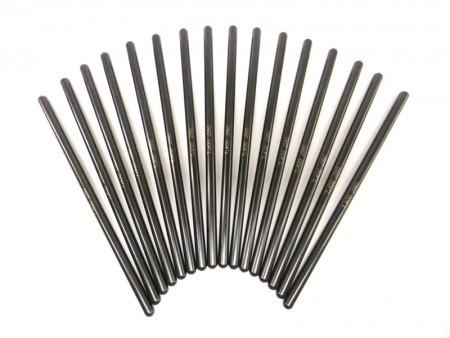

![ATI: Super Damper up to 15% [C7 Corvette, Z06, LT1 LT4]](http://weaponxmotorsports.com/cdn/shop/products/ATI-Corvette-LT1-Damper-SM_grande.jpg?v=1571441526)
![JW: Flexplate SFI Approved [LSA LSX LT1 LT4 LT5]](http://weaponxmotorsports.com/cdn/shop/products/jw_flex_plate_be0a888f-e930-4930-84b6-470d5762b282_grande.jpg?v=1571441060)
![Katech: C5R Billet Timing Chain [LS LT Camaro Corvette CTS V G8 SS]](http://weaponxmotorsports.com/cdn/shop/products/katech_timing_chain_ccbadaae-7990-4d82-a559-ff9e7922c9f4_grande.jpg?v=1571441054)
![Elite Engineering: E2 Single Catch Can [Camaro Corvette CTS V G8, LS LT]](http://weaponxmotorsports.com/cdn/shop/products/IMG_5197-HDR_4bf6efe3-9d05-4dd7-a5e4-2872bd288aca_grande.jpg?v=1571441471)
![Elite Engineering: E2 Single Catch Can [Camaro Corvette CTS V G8, LS LT]](http://weaponxmotorsports.com/cdn/shop/products/can1__88721.1461710992.1280.1280__82241.1465935832.1280.1280_small.jpg?v=1571441471)
![Elite Engineering: E2 Single Catch Can [Camaro Corvette CTS V G8, LS LT]](http://weaponxmotorsports.com/cdn/shop/products/can-4__42682.1461710991.1280.1280__70937.1465935832.1280.1280_small.jpg?v=1571441471)
![Elite Engineering: E2 Single Catch Can [Camaro Corvette CTS V G8, LS LT]](http://weaponxmotorsports.com/cdn/shop/products/E2-1_small.jpg?v=1571441471)
![Elite Engineering: E2 Single Catch Can [Camaro Corvette CTS V G8, LS LT]](http://weaponxmotorsports.com/cdn/shop/products/can-open3__56311.1461710991.1280.1280__15446.1465935832.1280.1280_small.jpg?v=1571441471)
![Elite Engineering: E2 Single Catch Can [Camaro Corvette CTS V G8, LS LT]](http://weaponxmotorsports.com/cdn/shop/products/Fit-7__84204.1466021395.1280.1280_small.jpg?v=1571441471)
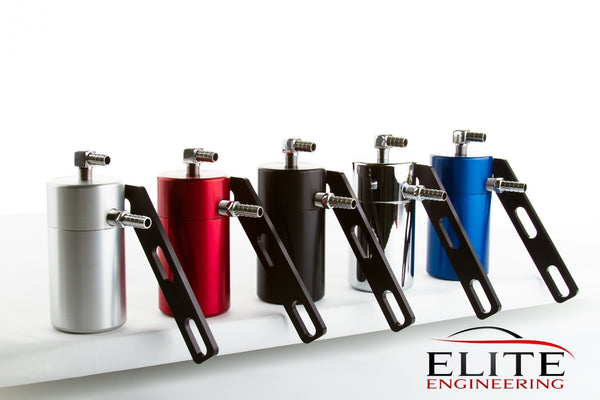


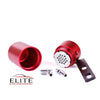



![GM: Head Gaskets [Camaro Corvette, LT1]](http://weaponxmotorsports.com/cdn/shop/products/LS9_gaskets__18928.1361414051.450.450_4e946ca9-cf35-4771-bb57-eed955ca9b43_grande.jpg?v=1571441054)
![WEAPON-X: The Cooling Kit [C7 Corvette, LT1 LT4]](http://weaponxmotorsports.com/cdn/shop/products/image_1_grande.png?v=1571441394)
![WEAPON-X: The Cooling Kit [C7 Corvette, LT1 LT4]](http://weaponxmotorsports.com/cdn/shop/products/image3_1024x1024_e4f232f8-be33-4d86-acf0-342e1ad7a15e_small.jpg?v=1571441394)
![WEAPON-X: The Cooling Kit [C7 Corvette, LT1 LT4]](http://weaponxmotorsports.com/cdn/shop/products/1139114m2_80cb67f3a905d1cf5ebf269299110c75f712d1b1_1024x1024_5cdfbacd-927a-4aad-9e42-81610bd558d2_small.jpg?v=1571441394)
![WEAPON-X: The Cooling Kit [C7 Corvette, LT1 LT4]](http://weaponxmotorsports.com/cdn/shop/products/123_1_grande_5cb23932-b6e2-497f-bdde-255bc980e00f_small.jpg?v=1571441394)
![WEAPON-X: The Cooling Kit [C7 Corvette, LT1 LT4]](http://weaponxmotorsports.com/cdn/shop/products/6A5A1878_1024x1024_f4a4658c-cd3c-4828-8bc5-0e48a12123fd_small.jpg?v=1571441394)
![WEAPON-X: The Cooling Kit [C7 Corvette, LT1 LT4]](http://weaponxmotorsports.com/cdn/shop/products/2019-02-08_12.45.17_small.jpg?v=1571441394)
![FIC: +30% LT4 Injectors [Camaro Corvette CTS V, LT1 LT4 LT5]](http://weaponxmotorsports.com/cdn/shop/products/FIC_grande.jpg?v=1571441393)
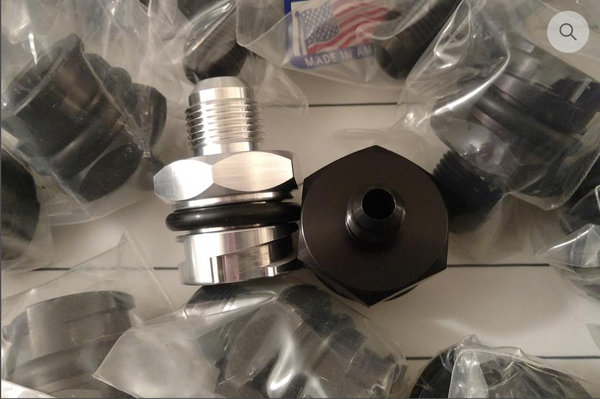



![Comp Cams: Rocker Arm Trunion Kit [LS1 LS2 LS3 LS7 LS6 LS9 LSA LT1 LT4]](http://weaponxmotorsports.com/cdn/shop/products/13702_KIT_A__30308.1339694929.450.450_779fde89-76da-4b84-baca-e3946a4e5e1a_grande.jpg?v=1571441061)
![Comp Cams: Rocker Arm Trunion Kit [LS1 LS2 LS3 LS7 LS6 LS9 LSA LT1 LT4]](http://weaponxmotorsports.com/cdn/shop/products/13702_KIT_B__24769.1339694936.450.450_6ab6e534-8c51-4379-9fbb-13c9ed58911f_small.jpg?v=1571441061)
![Comp Cams: Rocker Arm Trunion Kit [LS1 LS2 LS3 LS7 LS6 LS9 LSA LT1 LT4]](http://weaponxmotorsports.com/cdn/shop/products/13702_KIT_C__62906.1339694925.450.450_489f2375-4e84-45c4-b190-86984e107924_small.jpg?v=1571441061)
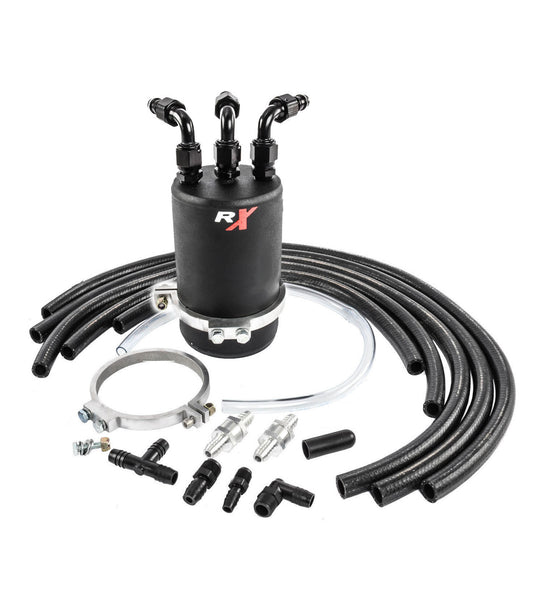
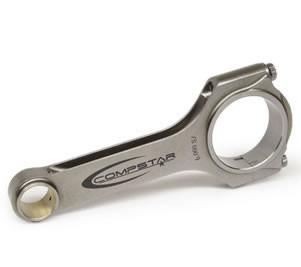
![Comp Cams: Lifters [Camaro Corvette CTS V, LS LT]](http://weaponxmotorsports.com/cdn/shop/products/CCA-875-16_grande.jpg?v=1571441526)
![Comp Cams: Hardened Pushrods [C7 Corvette Camaro CTS V, LT1 LT4]](http://weaponxmotorsports.com/cdn/shop/products/diaAPushrod_2a1106e8-a4d2-4d0d-ba5e-249bb278f335_small.jpg?v=1571441526)
![LMR: Forced Induction Catch Can Kit [C7 Corvette, Z06, LT1 LT4]](http://weaponxmotorsports.com/cdn/shop/products/lmr_breather_system_2_grande.jpg?v=1571441472)
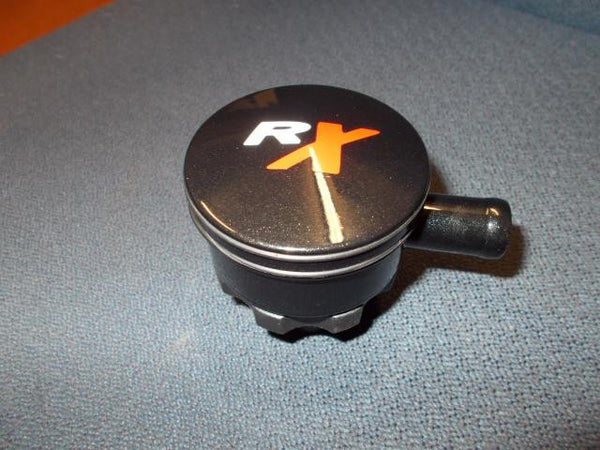
![Nick Williams: LT 112mm Throttle Body [Corvette Camaro CTS V, LT1 LT4 LT5]](http://weaponxmotorsports.com/cdn/shop/products/image_3332d252-05dd-4a28-8d20-c236413f1abc_grande.jpg?v=1571441896)
![Nick Williams: LT 112mm Throttle Body [Corvette Camaro CTS V, LT1 LT4 LT5]](http://weaponxmotorsports.com/cdn/shop/products/image_a7a10fdd-07ed-470d-8471-29ae8105f87a_small.jpg?v=1571441896)
![Nick Williams: LT 112mm Throttle Body [Corvette Camaro CTS V, LT1 LT4 LT5]](http://weaponxmotorsports.com/cdn/shop/products/image_9264c0de-4d02-40eb-a7cb-cdf5a5d1ed78_small.jpg?v=1571441896)
![Nick Williams: LT 112mm Throttle Body [Corvette Camaro CTS V, LT1 LT4 LT5]](http://weaponxmotorsports.com/cdn/shop/products/image_6dabf5c7-ba30-458f-b81c-2e2ad4c766d1_small.jpg?v=1571441896)
![Nick Williams: LT 112mm Throttle Body [Corvette Camaro CTS V, LT1 LT4 LT5]](http://weaponxmotorsports.com/cdn/shop/products/img_7367_26018872348_o_e925b067-faaf-40ab-b47b-b55565ecccdd_small.jpg?v=1571441896)
![Nick Williams: LT 112mm Throttle Body [Corvette Camaro CTS V, LT1 LT4 LT5]](http://weaponxmotorsports.com/cdn/shop/products/img_7369_25020533847_o_8553840c-6558-4d56-a81f-3187b97ef72a_small.jpg?v=1571441896)
![Nick Williams: LT 112mm Throttle Body [Corvette Camaro CTS V, LT1 LT4 LT5]](http://weaponxmotorsports.com/cdn/shop/products/img_7370_26018871268_o_59dd2723-7b8a-4883-81e9-8b08ee2bf655_small.jpg?v=1571441896)
![Nick Williams: LT 112mm Throttle Body [Corvette Camaro CTS V, LT1 LT4 LT5]](http://weaponxmotorsports.com/cdn/shop/products/img_7372_25020532697_o_07763b73-5ceb-4713-aba9-d7841f16b1be_small.jpg?v=1571441896)
![Nick Williams: LT 112mm Throttle Body [Corvette Camaro CTS V, LT1 LT4 LT5]](http://weaponxmotorsports.com/cdn/shop/products/img_7376_26018869998_o_b02fe44e-2d0d-4241-802d-61495c14fb1f_small.jpg?v=1571441896)
![Nick Williams: LT 112mm Throttle Body [Corvette Camaro CTS V, LT1 LT4 LT5]](http://weaponxmotorsports.com/cdn/shop/products/image_5081fc77-7d0c-4e71-907c-036808553cd6_small.jpg?v=1571441896)
![Nick Williams: LT 112mm Throttle Body [Corvette Camaro CTS V, LT1 LT4 LT5]](http://weaponxmotorsports.com/cdn/shop/products/img_7386_26018869448_o_3b51b8b0-8999-4bb8-972f-04fce0edd5ab_small.jpg?v=1571441896)
![Nick Williams: LT 112mm Throttle Body [Corvette Camaro CTS V, LT1 LT4 LT5]](http://weaponxmotorsports.com/cdn/shop/products/img_7387_39181766934_o_7241ecb5-6aa5-48cb-832e-a721d8203b10_small.jpg?v=1571441896)
![Nick Williams: LT 112mm Throttle Body [Corvette Camaro CTS V, LT1 LT4 LT5]](http://weaponxmotorsports.com/cdn/shop/products/img_7388_38992731705_o_b416c5da-3f7a-4eea-92d0-0c20566428a5_small.jpg?v=1571441896)
![Nick Williams: LT 112mm Throttle Body [Corvette Camaro CTS V, LT1 LT4 LT5]](http://weaponxmotorsports.com/cdn/shop/products/img_7389_26018867468_o_17271a60-b0af-4af7-b228-3ca38854a402_small.jpg?v=1571441896)
![Nick Williams: LT 112mm Throttle Body [Corvette Camaro CTS V, LT1 LT4 LT5]](http://weaponxmotorsports.com/cdn/shop/products/img_7393_26018866928_o_8842baf7-aa85-44ff-8583-ae19e954e8d0_small.jpg?v=1571441896)
![Nick Williams: LT 112mm Throttle Body [Corvette Camaro CTS V, LT1 LT4 LT5]](http://weaponxmotorsports.com/cdn/shop/products/image_b159ccb4-2b4a-40a9-9e1a-55a8bbf1444c_small.jpg?v=1571441896)
![Nick Williams: LT 112mm Throttle Body [Corvette Camaro CTS V, LT1 LT4 LT5]](http://weaponxmotorsports.com/cdn/shop/products/image_6217104d-a16d-45b3-8970-dea7d2aedbc2_small.jpg?v=1571441896)
![Nick Williams: LT 112mm Throttle Body [Corvette Camaro CTS V, LT1 LT4 LT5]](http://weaponxmotorsports.com/cdn/shop/products/image_1c0e48ee-28fb-43ba-9bb1-75c94c4fc63c_small.jpg?v=1571441896)
![Nick Williams: LT 112mm Throttle Body [Corvette Camaro CTS V, LT1 LT4 LT5]](http://weaponxmotorsports.com/cdn/shop/products/image_6660ab10-d566-4947-bc22-baa5d827b95f_small.jpg?v=1571441896)
![Nick Williams: LT 112mm Throttle Body [Corvette Camaro CTS V, LT1 LT4 LT5]](http://weaponxmotorsports.com/cdn/shop/products/image_6f64cad3-2e46-4c58-97b9-ec4837b66065_small.jpg?v=1571441896)
![Nick Williams: LT 112mm Throttle Body [Corvette Camaro CTS V, LT1 LT4 LT5]](http://weaponxmotorsports.com/cdn/shop/products/image_be931e69-c0cf-453f-ba2f-977a1e02325a_small.jpg?v=1571441896)
![WEAPON-X: PD Supercharger Camshaft Kit [C7 Corvette Stingray, Z51, GS, LT1]](http://weaponxmotorsports.com/cdn/shop/products/Gen-V-Cam_1024x1024_dcf800b0-b6bf-4d25-bb44-ba6edc4c6fe2_grande.jpg?v=1571441772)
![WEAPON-X: PD Supercharger Camshaft Kit [C7 Corvette Stingray, Z51, GS, LT1]](http://weaponxmotorsports.com/cdn/shop/products/SK001_A__78432.1337795659.450.450_b89c8c7a-84ba-4d8e-ab62-f9e47c3c8288_small.jpg?v=1571441772)
![WEAPON-X: PD Supercharger Camshaft Kit [C7 Corvette Stingray, Z51, GS, LT1]](http://weaponxmotorsports.com/cdn/shop/products/ARP_134_1003__64970.1361741164.450.450_49f8778a-9fbf-4711-8379-408bf212e7d3_small.jpg?v=1571441772)
![WEAPON-X: PD Supercharger Camshaft Kit [C7 Corvette Stingray, Z51, GS, LT1]](http://weaponxmotorsports.com/cdn/shop/products/LS3_3_bolt_sprocket_12586481__93664.1360209288.450.450_121a7ff9-c79d-46ef-ae86-6ce8c18d5671_small.jpg?v=1571441772)
![WEAPON-X: PD Supercharger Camshaft Kit [C7 Corvette Stingray, Z51, GS, LT1]](http://weaponxmotorsports.com/cdn/shop/products/comp_cam_push_rods_1_grande_b4b28d3a-9ced-42ba-98e9-6b0ffc004286_small.jpg?v=1571441772)
![WEAPON-X: PD Supercharger Camshaft Kit [C7 Corvette Stingray, Z51, GS, LT1]](http://weaponxmotorsports.com/cdn/shop/products/LSA_070-234-4346_c1755c0a-d678-4467-b51b-277249b99771_small.jpg?v=1571441772)
![Katech: Piston Oil Squirters [LS LT Camaro Corvette G8 SS]](http://weaponxmotorsports.com/cdn/shop/products/Katech_Performance_PN_A5144_G_08e0a310-fc1b-478d-8b55-ddf54435e437_grande.jpg?v=1571441058)
![Katech: Piston Oil Squirters [LS LT Camaro Corvette G8 SS]](http://weaponxmotorsports.com/cdn/shop/products/pison_oil_squirter_7e8d5efd-4ffb-4c7b-b794-8c9c0a19df22_small.jpg?v=1571441058)
![Comp Cams: Cam Phase limiter [Corvette Camaro CTS V, LT1 LT4 LT5]](http://weaponxmotorsports.com/cdn/shop/products/Comp_Cams_GM_Gen_IV_VVT_Cam_Phaser_Limiter_Kits__32342.1293918164.1280.1280_grande.jpg?v=1571441473)
![IWIS: Single Roller Timing Chain [LS2 LS3 LS6 LS7 LS9 LSA LT1 LT4 LT5]](http://weaponxmotorsports.com/cdn/shop/products/SD3SR602__45023.1360547856.450.450_953f2e18-19c2-4660-b28b-bc2e181250a7_grande.jpg?v=1571441060)
![WEAPON-X: Centri Supercharger Camshaft Kit [C7 Corvette Stingray, Z51, GS, LT1]](http://weaponxmotorsports.com/cdn/shop/products/Gen-V-Cam_1024x1024_e22d3f40-c604-44dc-bfa2-662c6b937692_grande.jpg?v=1571441772)
![WEAPON-X: Centri Supercharger Camshaft Kit [C7 Corvette Stingray, Z51, GS, LT1]](http://weaponxmotorsports.com/cdn/shop/products/SK001_A__78432.1337795659.450.450_89bb6177-fe95-46ba-a78d-a27e3f3be269_small.jpg?v=1571441772)
![WEAPON-X: Centri Supercharger Camshaft Kit [C7 Corvette Stingray, Z51, GS, LT1]](http://weaponxmotorsports.com/cdn/shop/products/ARP_134_1003__64970.1361741164.450.450_b6a194e8-0adb-4792-bc26-38ff68dc3908_small.jpg?v=1571441772)
![WEAPON-X: Centri Supercharger Camshaft Kit [C7 Corvette Stingray, Z51, GS, LT1]](http://weaponxmotorsports.com/cdn/shop/products/LS3_3_bolt_sprocket_12586481__93664.1360209288.450.450_a4a98997-3182-4348-ac17-b82d8e4b8c81_small.jpg?v=1571441772)
![WEAPON-X: Centri Supercharger Camshaft Kit [C7 Corvette Stingray, Z51, GS, LT1]](http://weaponxmotorsports.com/cdn/shop/products/comp_cam_push_rods_1_grande_fe8e17e1-bc04-449a-9c6b-c94e3810a4ac_small.jpg?v=1571441772)
![WEAPON-X: Centri Supercharger Camshaft Kit [C7 Corvette Stingray, Z51, GS, LT1]](http://weaponxmotorsports.com/cdn/shop/products/LSA_070-234-4346_ca2365c4-6eaa-4ac7-9967-24e13ec9c7cb_small.jpg?v=1571441772)
![Hinson: C7R Billet Timing Chain [LS LT Camaro Corvette CTS V G8 SS]](http://weaponxmotorsports.com/cdn/shop/products/katech_timing_chain_8baf8186-a88d-4b38-bc34-1746c8c35bd6_grande.jpg?v=1571441591)
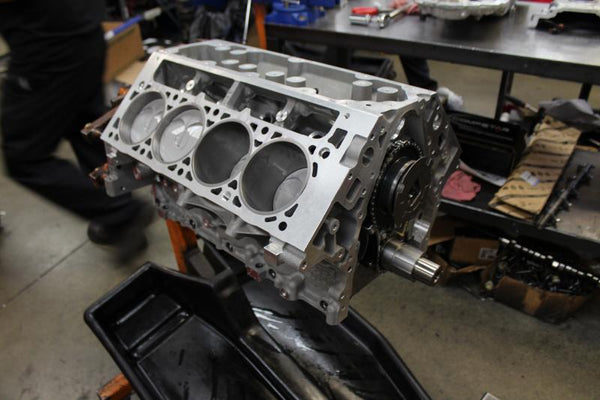





































![Callies: Magnum Crankshaft [LT1 LT4 LT5 L86 Engines]](http://weaponxmotorsports.com/cdn/shop/products/LSX-MAGNUM2-1024x512_e6ab78de-42a5-475a-aa4d-5aabfb40182a_grande.jpg?v=1571441589)
![Callies: Magnum Crankshaft [LT1 LT4 LT5 L86 Engines]](http://weaponxmotorsports.com/cdn/shop/products/MagnumIIILogo_5bfdb65d-e256-444f-9945-767affa6c5b9_small.jpg?v=1571441589)